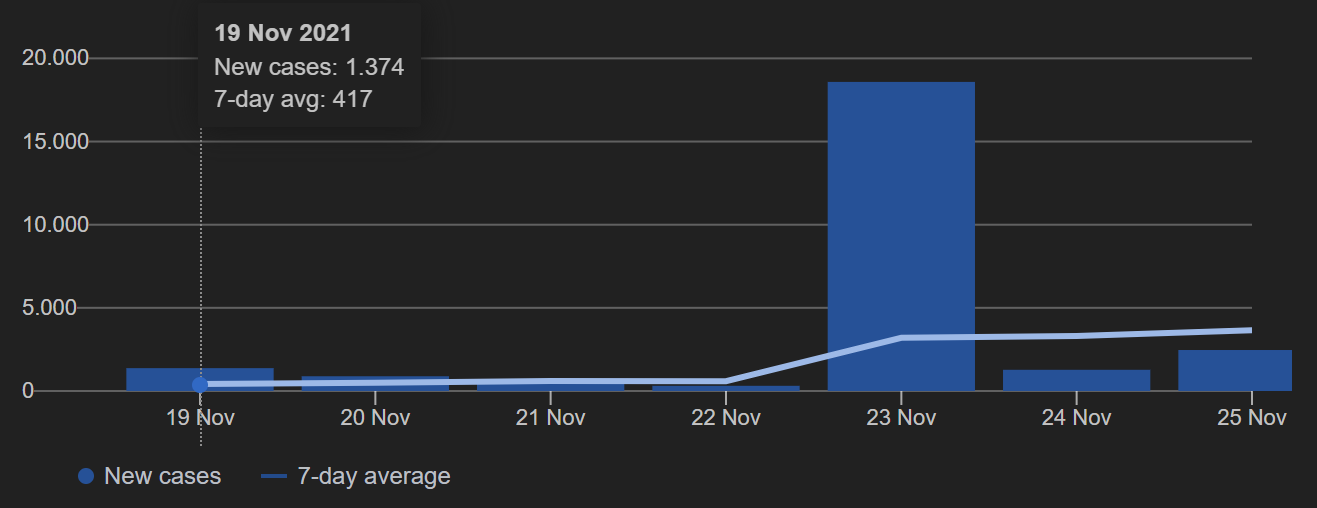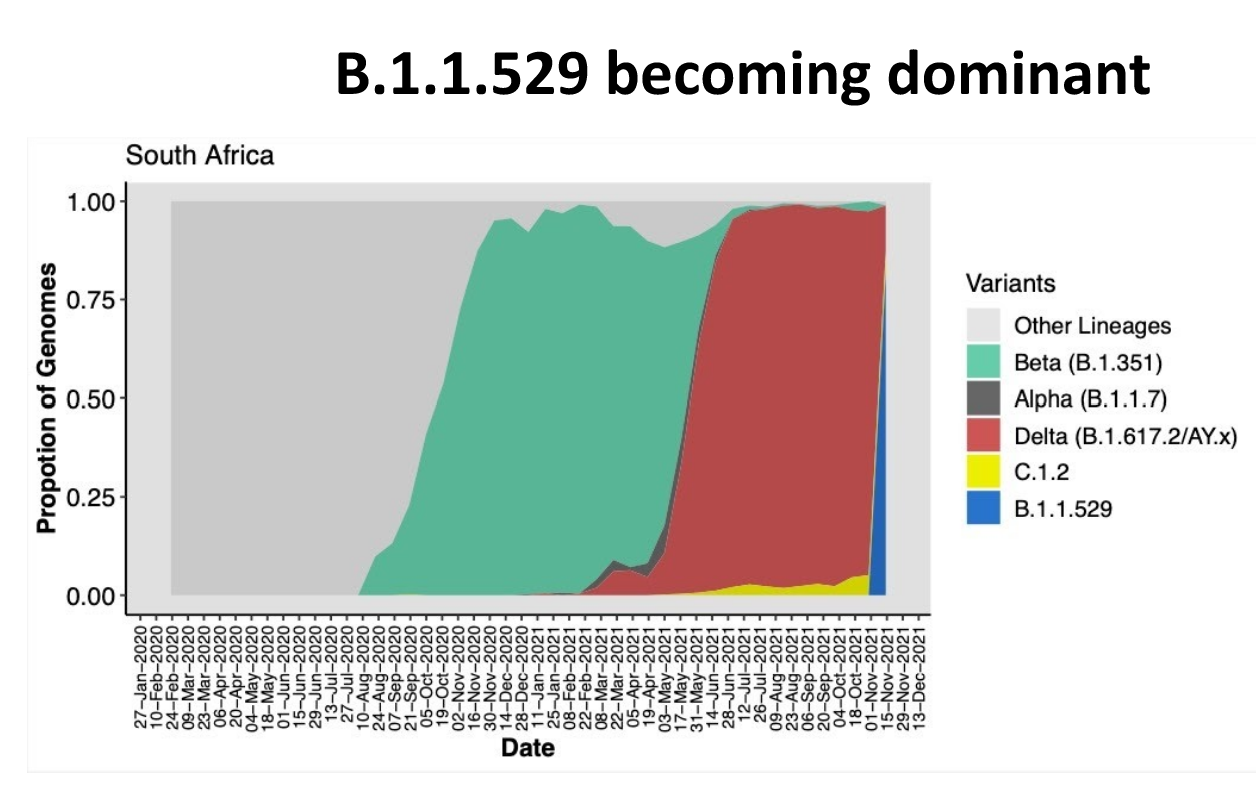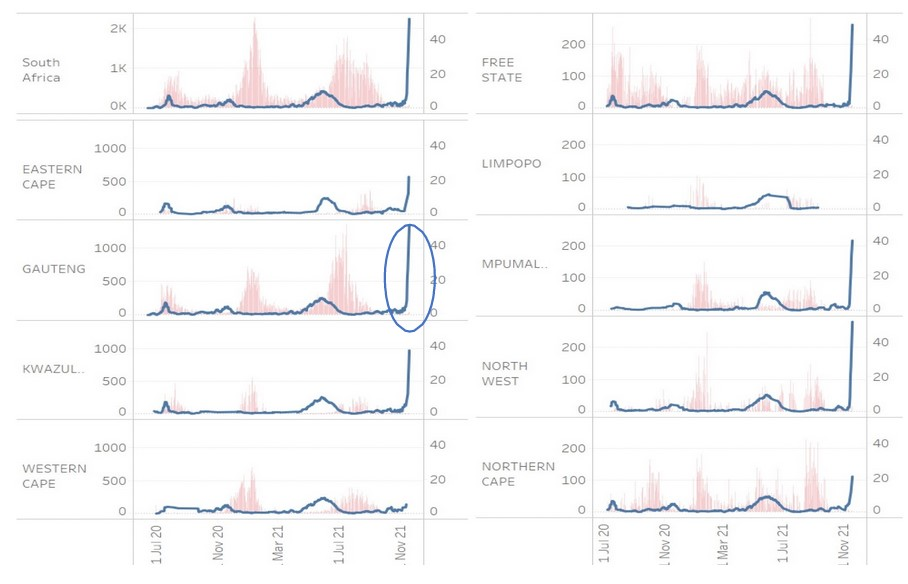Rapid Increase of Highly Mutated B.1.1.529 Strain in South Africa
13arunto
4dawangy
10BrianTan
8BrianTan
3Lukas Finnveden
4Gurkenglas
3Lukas Finnveden
7Gurkenglas
2Vitor
3jimv
3Lukas Finnveden
1J Bostock
8Lukas Finnveden
1jimv
2Vitor
New Comment
Thanks for this. This tweet from Dr. Jacob Glanville, founder and CEO of Centivax, makes me worried about this variant too:
The new B.1.1.529 strain out of South Africa has 15 mutations in the RBD where majority of neutralizing antibodies bind. The current vaccines and even Delta-based vaccines probably won’t work against this new strain. Swift, vigorous containment is needed.
This screenshot from that thread claims that the new variant was ~89% of cases ~18 days after it was 1% of cases, meaning it went from a ratio of ~1:100 to ~810:100. If both delta and this new strain has a generation time of 4.6 days (first result from google for delta), that would indicate that it's R-value is the (18/4.6)th root of 810 ~= 5.5 times higher than delta's. (But some of that change could be explained by a shorter generation time.)
(Edited numbers in response to jimv's comment.)

This looks more like "they entered a bunch of tests in the database all at once", right?
[This comment is no longer endorsed by its author]
The number of cases per day, which might have explained an appearance of anomalous spread. Although after reading https://twitter.com/jburnmurdoch/status/1463963512565387275 I'm retracting.
This is south africa's number of reported covid cases. There's a huge spike on nov 23.
The south african health ministry is claiming (in the slides linked elsewhere in these comments) that they reacted incredibly fast, publicly communicating the finding of the new variant to the world within 36 hours. But the numbers reported here look exactly like you'd expect if someone had deliberately sat on the data for several days, and then released it all at once.
Also, the graph (in the post) showing the proportion of different variants needs to be taken with a grain of salt. That graph makes it look like the new variant is taking over brutally fast, much faster than the delta variant did in its day. But if the reporting of cases is this uneven, then we cannot extrapolate any short-term trend at all.
EDIT: just saw Gurkenglas' other comment. If the data is wrong then my interpretation is irrelevant. But I'd still caution people to not jump the gun in predicting this new variant's behavior based on very little data.
it went from a ratio of ~1:100 to ~890:100
I think ~89% is more like 810:100. Not that that changes the general message, and there's no doubt a fair amount of uncertainty in the percentage anyway.
This is a pretty strong indication of immune escape to me, if it persists in other outbreaks. If this was purely from increased infectiousness in naive individuals it would imply an R-value (in non-immune populations) of like 40 or something, which seems much less plausible than immune escape. I don't know what the vaccination/infection rates are in these communities though.
Quick googling, numbers for south africa:
- Population 59 million.
- 28% of population at least one dose, 24% fully vaccinated.
- 89,771 deaths. At 0.5% fatality rate that would be 18 million people ~= 30% of the population.
So maybe 100% immune escape would be a factor 1.5-3? Leaving at least a factor 2-3 for generally increased infectiousness. (Assuming unchanged generation length.)
The sidebar at about 4m20s in the video says that Guateng province has fully vaccinated 30% of its adult population.
SA health department is holding a press conference, starting now. Anyone can join via zoom.
https://sacoronavirus.co.za/2021/11/26/media-qa-session-on-covid-19-developments/



